Citibank 2012 Annual Report Download - page 48
Download and view the complete annual report
Please find page 48 of the 2012 Citibank annual report below. You can navigate through the pages in the report by either clicking on the pages listed below, or by using the keyword search tool below to find specific information within the annual report.-
 1
1 -
 2
2 -
 3
3 -
 4
4 -
 5
5 -
 6
6 -
 7
7 -
 8
8 -
 9
9 -
 10
10 -
 11
11 -
 12
12 -
 13
13 -
 14
14 -
 15
15 -
 16
16 -
 17
17 -
 18
18 -
 19
19 -
 20
20 -
 21
21 -
 22
22 -
 23
23 -
 24
24 -
 25
25 -
 26
26 -
 27
27 -
 28
28 -
 29
29 -
 30
30 -
 31
31 -
 32
32 -
 33
33 -
 34
34 -
 35
35 -
 36
36 -
 37
37 -
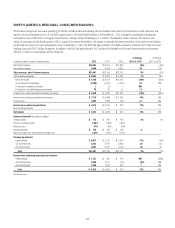 38
38 -
 39
39 -
 40
40 -
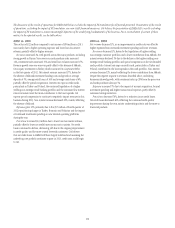 41
41 -
 42
42 -
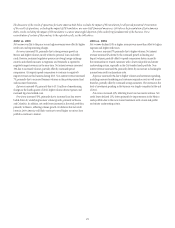 43
43 -
 44
44 -
 45
45 -
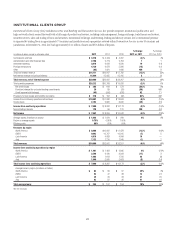 46
46 -
 47
47 -
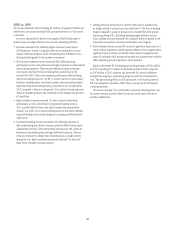 48
48 -
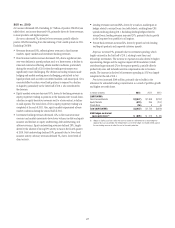 49
49 -
 50
50 -
 51
51 -
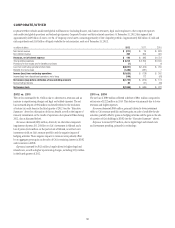 52
52 -
 53
53 -
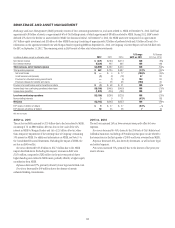 54
54 -
 55
55 -
 56
56 -
 57
57 -
 58
58 -
 59
59 -
 60
60 -
 61
61 -
 62
62 -
 63
63 -
 64
64 -
 65
65 -
 66
66 -
 67
67 -
 68
68 -
 69
69 -
 70
70 -
 71
71 -
 72
72 -
 73
73 -
 74
74 -
 75
75 -
 76
76 -
 77
77 -
 78
78 -
 79
79 -
 80
80 -
 81
81 -
 82
82 -
 83
83 -
 84
84 -
 85
85 -
 86
86 -
 87
87 -
 88
88 -
 89
89 -
 90
90 -
 91
91 -
 92
92 -
 93
93 -
 94
94 -
 95
95 -
 96
96 -
 97
97 -
 98
98 -
 99
99 -
 100
100 -
 101
101 -
 102
102 -
 103
103 -
 104
104 -
 105
105 -
 106
106 -
 107
107 -
 108
108 -
 109
109 -
 110
110 -
 111
111 -
 112
112 -
 113
113 -
 114
114 -
 115
115 -
 116
116 -
 117
117 -
 118
118 -
 119
119 -
 120
120 -
 121
121 -
 122
122 -
 123
123 -
 124
124 -
 125
125 -
 126
126 -
 127
127 -
 128
128 -
 129
129 -
 130
130 -
 131
131 -
 132
132 -
 133
133 -
 134
134 -
 135
135 -
 136
136 -
 137
137 -
 138
138 -
 139
139 -
 140
140 -
 141
141 -
 142
142 -
 143
143 -
 144
144 -
 145
145 -
 146
146 -
 147
147 -
 148
148 -
 149
149 -
 150
150 -
 151
151 -
 152
152 -
 153
153 -
 154
154 -
 155
155 -
 156
156 -
 157
157 -
 158
158 -
 159
159 -
 160
160 -
 161
161 -
 162
162 -
 163
163 -
 164
164 -
 165
165 -
 166
166 -
 167
167 -
 168
168 -
 169
169 -
 170
170 -
 171
171 -
 172
172 -
 173
173 -
 174
174 -
 175
175 -
 176
176 -
 177
177 -
 178
178 -
 179
179 -
 180
180 -
 181
181 -
 182
182 -
 183
183 -
 184
184 -
 185
185 -
 186
186 -
 187
187 -
 188
188 -
 189
189 -
 190
190 -
 191
191 -
 192
192 -
 193
193 -
 194
194 -
 195
195 -
 196
196 -
 197
197 -
 198
198 -
 199
199 -
 200
200 -
 201
201 -
 202
202 -
 203
203 -
 204
204 -
 205
205 -
 206
206 -
 207
207 -
 208
208 -
 209
209 -
 210
210 -
 211
211 -
 212
212 -
 213
213 -
 214
214 -
 215
215 -
 216
216 -
 217
217 -
 218
218 -
 219
219 -
 220
220 -
 221
221 -
 222
222 -
 223
223 -
 224
224 -
 225
225 -
 226
226 -
 227
227 -
 228
228 -
 229
229 -
 230
230 -
 231
231 -
 232
232 -
 233
233 -
 234
234 -
 235
235 -
 236
236 -
 237
237 -
 238
238 -
 239
239 -
 240
240 -
 241
241 -
 242
242 -
 243
243 -
 244
244 -
 245
245 -
 246
246 -
 247
247 -
 248
248 -
 249
249 -
 250
250 -
 251
251 -
 252
252 -
 253
253 -
 254
254 -
 255
255 -
 256
256 -
 257
257 -
 258
258 -
 259
259 -
 260
260 -
 261
261 -
 262
262 -
 263
263 -
 264
264 -
 265
265 -
 266
266 -
 267
267 -
 268
268 -
 269
269 -
 270
270 -
 271
271 -
 272
272 -
 273
273 -
 274
274 -
 275
275 -
 276
276 -
 277
277 -
 278
278 -
 279
279 -
 280
280 -
 281
281 -
 282
282 -
 283
283 -
 284
284 -
 285
285 -
 286
286 -
 287
287 -
 288
288 -
 289
289 -
 290
290 -
 291
291 -
 292
292 -
 293
293 -
 294
294 -
 295
295 -
 296
296 -
 297
297 -
 298
298 -
 299
299 -
 300
300 -
 301
301 -
 302
302 -
 303
303 -
 304
304 -
 305
305 -
 306
306 -
 307
307 -
 308
308 -
 309
309 -
 310
310 -
 311
311 -
 312
312 -
 313
313 -
 314
314 -
 315
315 -
 316
316 -
 317
317 -
 318
318 -
 319
319 -
 320
320 -
 321
321 -
 322
322 -
 323
323 -
 324
324
 |
 |
26
2012 vs. 2011
Net income decreased 10%. Excluding $2.5 billion of negative CVA/DVA (see
table below), net income increased 56%, primarily driven by a 13% increase
in revenues.
Revenues decreased 8%, driven by the negative CVA/DVA and mark-to-
market losses on hedges related to accrual loans. Excluding CVA/DVA:
• Revenues increased 13%, reflecting higher revenues in most major
S&B businesses. Overall, Citi gained wallet share during 2012 in most
major products and regions, while maintaining what it believes to be a
disciplined risk appetite for the market environment.
• Fixed income markets revenues increased 28%, reflecting strong
performance in rates and currencies and higher revenues in credit-related
and securitized products. These results reflected an improved market
environment and more balanced trading flows, particularly in the
second half of 2012. Rates and currencies performance reflected strong
client and trading results in G-10 FX, G-10 rates and Citi’s local markets
franchise. Credit products, securitized markets and municipals products
experienced improved trading results, particularly in the second half of
2012, compared to the prior-year period. Citi’s position serving corporate
clients for markets products also contributed to the strength and diversity
of client flows.
• Equity markets revenues increased 1%, due to improved derivatives
performance as well as the absence of proprietary trading losses in
2011, partially offset by lower cash equity volumes that impacted the
industry as a whole. Citi’s improved performance in derivatives reflected
improved trading and continued progress in capturing additional client
wallet share.
• Investment banking revenues increased 10%, reflecting increases in
debt underwriting and advisory revenues, partially offset by lower equity
underwriting revenues. Debt underwriting revenues rose 18%, driven by
increases in investment grade and high yield bond issuances. Advisory
revenues increased 4%, despite the overall reduction in market activity
during the year. Equity underwriting revenues declined 7%, driven by
lower levels of market and client activity.
• Lending revenues decreased 45%, driven by the mark-to-market losses
on hedges related to accrual loans (see table below). The loss on lending
hedges compared to a gain in the prior year, resulted from CDS spreads
narrowing during 2012. Excluding lending hedges related to accrual
loans, lending revenues increased 31%, primarily driven by growth in the
Corporate loan portfolio and improved spreads in most regions.
• Private Bank revenues increased 8%, driven by growth in client assets as a
result of client acquisition and development efforts in Citi’s targeted client
segments. Deposit volumes, investment assets under management and
loans all increased, while pricing and product mix optimization initiatives
offset underlying spread compression across products.
Expenses decreased 4%. Excluding repositioning charges of $349 million
in 2012 (including $237 million in the fourth quarter of 2012) compared
to $267 million in 2011, expenses also decreased 4%, driven by efficiency
savings from ongoing re-engineering programs and lower compensation
costs. The repositioning efforts in S&B announced in the fourth quarter of
2012 are designed to streamline S&B’s client coverage model and improve
overall productivity.
Provisions increased 5% to $122 million, primarily reflecting lower loan
loss reserve releases, partially offset by lower net credit losses, both due to
portfolio stabilization.
